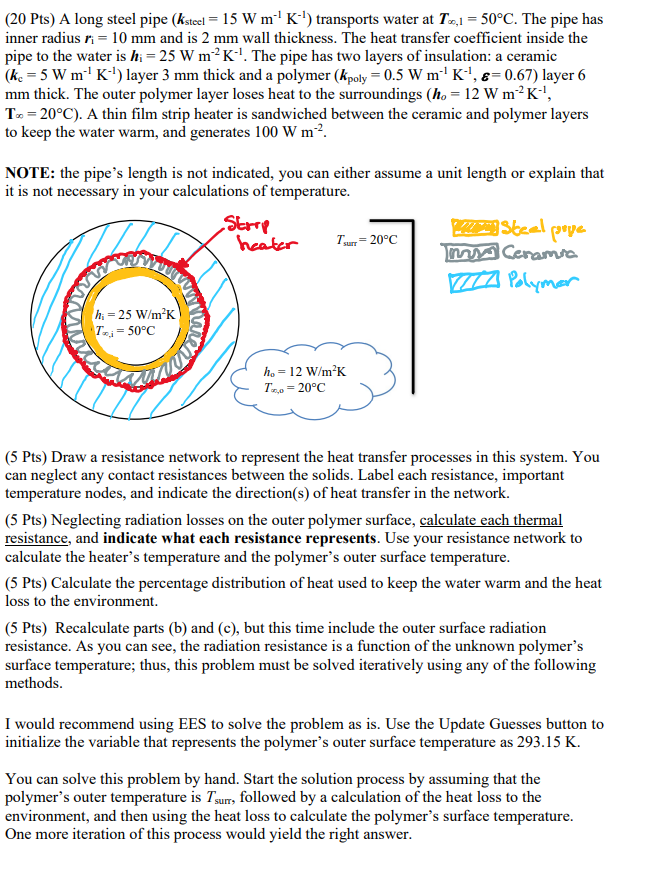Answered step by step
Verified Expert Solution
Question
1 Approved Answer
(20 Pts) A long steel pipe (Ksteel = 15 W m K-) transports water at T1 = 50C. The pipe has inner radius r

(20 Pts) A long steel pipe (Ksteel = 15 W m K-) transports water at T1 = 50C. The pipe has inner radius r = 10 mm and is 2 mm wall thickness. The heat transfer coefficient inside the pipe to the water is h = 25 W m K-. The pipe has two layers of insulation: a ceramic (Kc = 5 W m K-) layer 3 mm thick and a polymer (kpoly = 0.5 W m K-, &= 0.67) layer 6 mm thick. The outer polymer layer loses heat to the surroundings (ho = 12 W m K-, T%= 20C). A thin film strip heater is sandwiched between the ceramic and polymer layers to keep the water warm, and generates 100 W m. NOTE: the pipe's length is not indicated, you can either assume a unit length or explain that it is not necessary in your calculations of temperature. h = 25 W/mK Tj = 50C Strip heater Tsurr = 20C ho = 12 W/mK To = 20C 222 Steel pope my Ceramic A Polymer (5 Pts) Draw a resistance network to represent the heat transfer processes in this system. You can neglect any contact resistances between the solids. Label each resistance, important temperature nodes, and indicate the direction(s) of heat transfer in the network. (5 Pts) Neglecting radiation losses on the outer polymer surface, calculate each thermal resistance, and indicate what each resistance represents. Use your resistance network to calculate the heater's temperature and the polymer's outer surface temperature. (5 Pts) Calculate the percentage distribution of heat used to keep the water warm and the heat loss to the environment. (5 Pts) Recalculate parts (b) and (c), but this time include the outer surface radiation resistance. As you can see, the radiation resistance is a function of the unknown polymer's surface temperature; thus, this problem must be solved iteratively using any of the following methods. I would recommend using EES to solve the problem as is. Use the Update Guesses button to initialize the variable that represents the polymer's outer surface temperature as 293.15 K. You can solve this problem by hand. Start the solution process by assuming that the polymer's outer temperature is Tsum, followed by a calculation of the heat loss to the environment, and then using the heat loss to calculate the polymer's surface temperature. One more iteration of this process would yield the right answer.
Step by Step Solution
There are 3 Steps involved in it
Step: 1

Get Instant Access to Expert-Tailored Solutions
See step-by-step solutions with expert insights and AI powered tools for academic success
Step: 2

Step: 3

Ace Your Homework with AI
Get the answers you need in no time with our AI-driven, step-by-step assistance
Get Started


